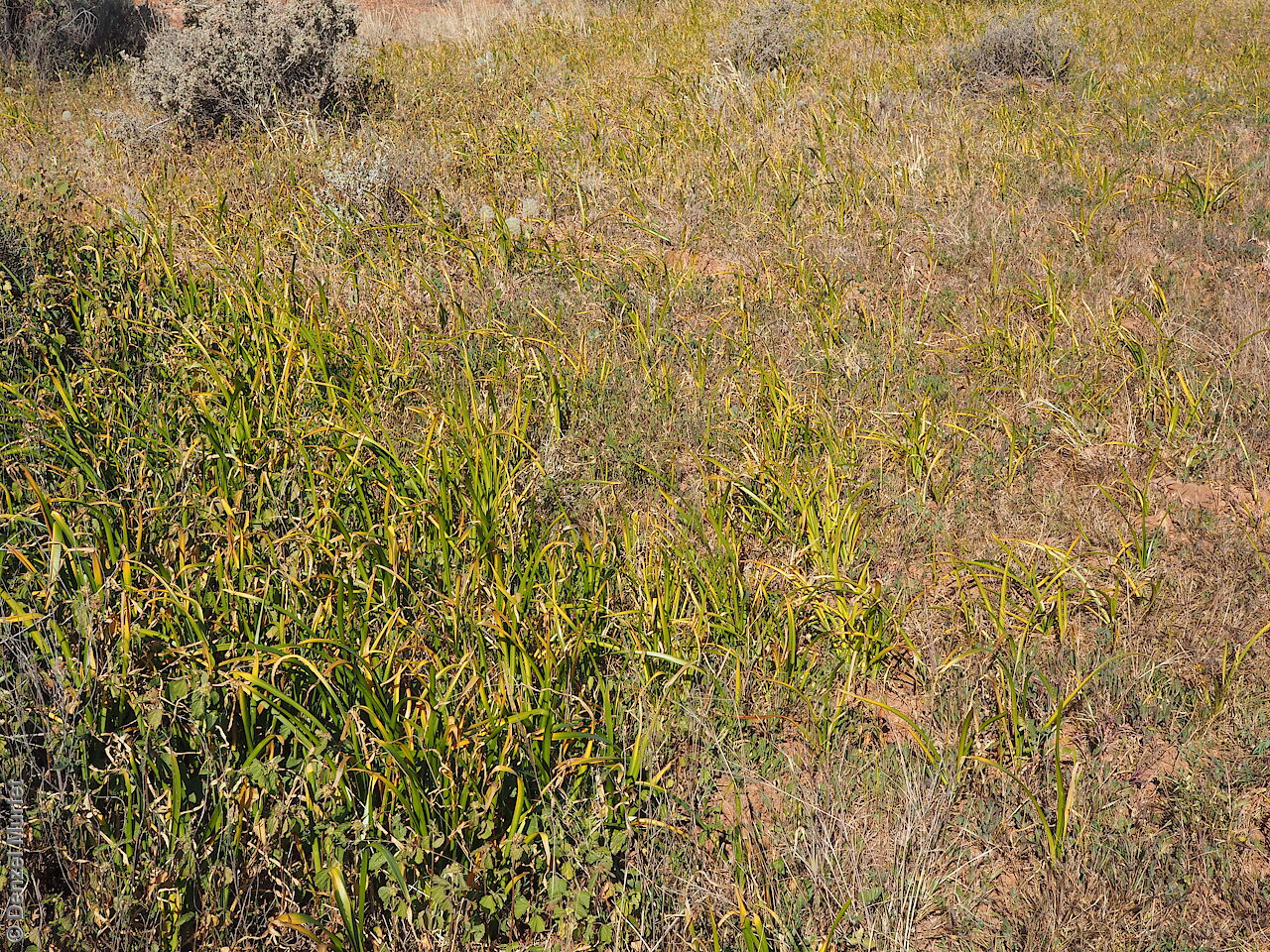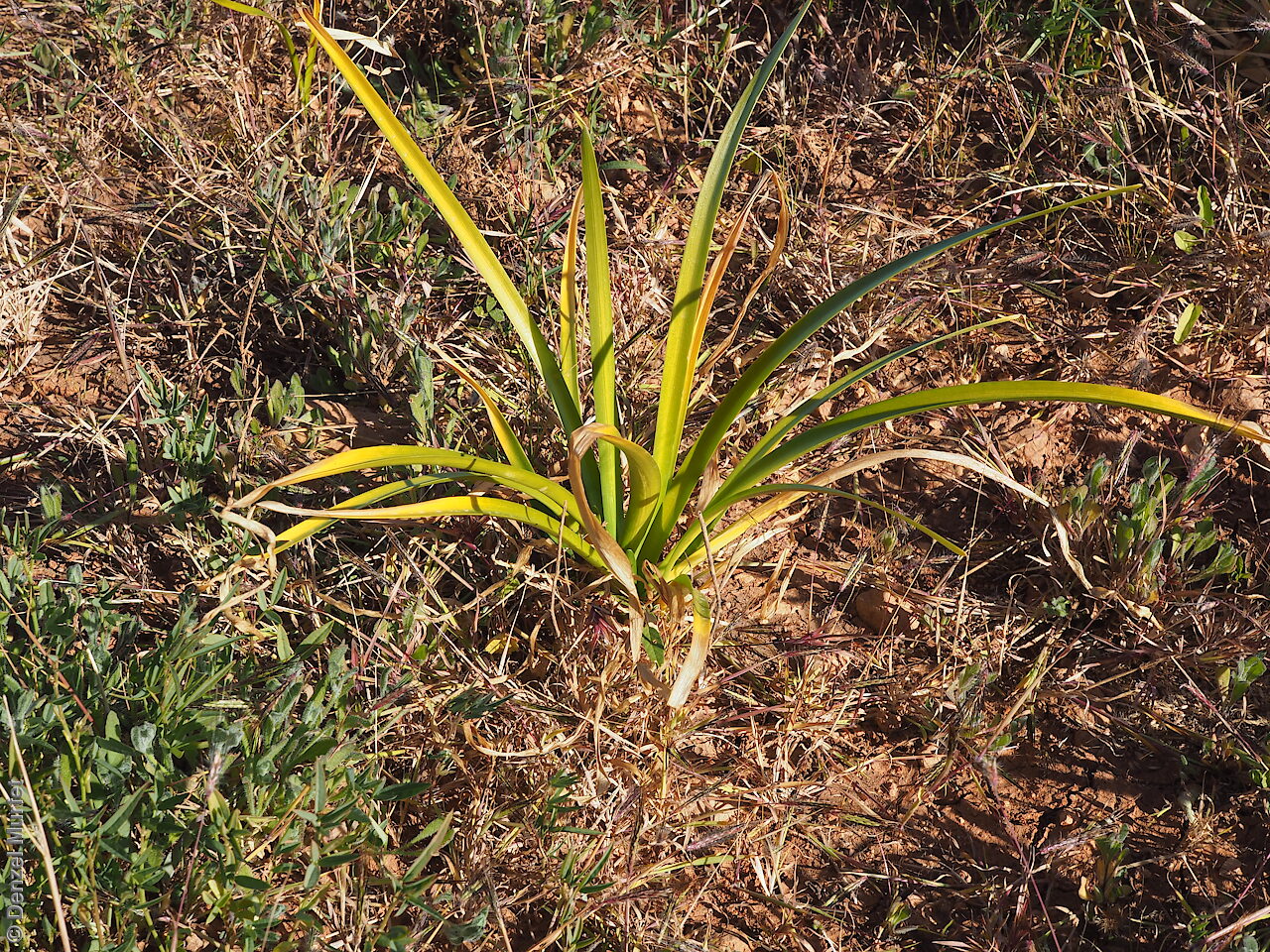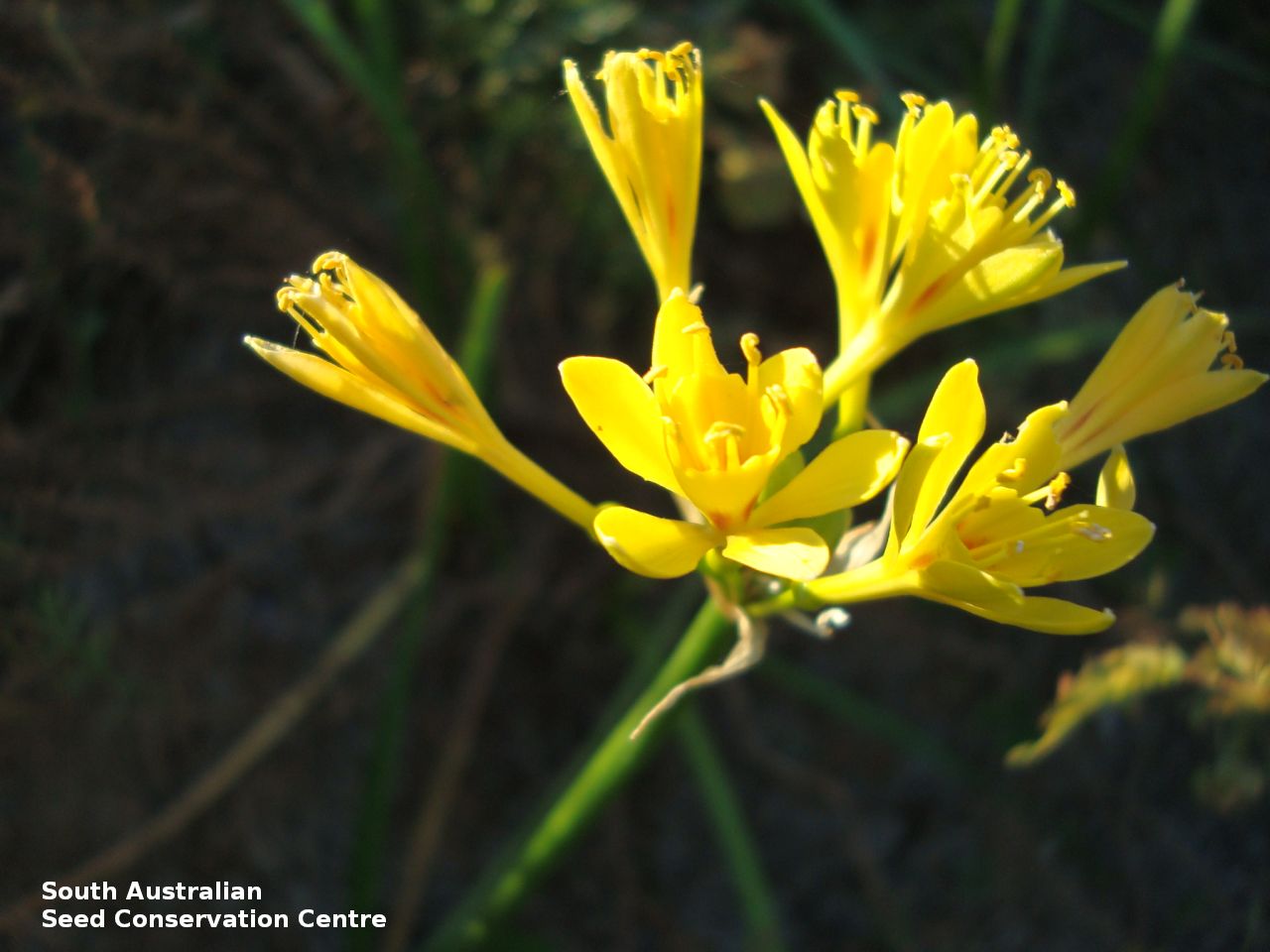




















Etymology
Calostemma from the Greek 'kalos' meaning beautiful and 'stemma' meaning crown,referring to the corona comprised of the filaments. Luteum from Latin meaning yellow, referring to the colour of the flowers.
Distribution and status
Found scattered in the eastern part of South Australia north of the Murray River growing in drainage and floodplain systems. Also found in Queensland, New South Wales and Victoria. Native. Common in South Australia. Rare in Victoria. Common in the other States.
Herbarium regions: Lake Eyre, Flinders Ranges, Murray
NRM regions: South Australian Arid Lands, South Australian Murray-Darling Basin
AVH map: SA distribution map (external link)
Plant description
Bulb globular to 6 cm diameter, covered with thin brown coating. Leaves, several, linear, flat to 50cm long and 8 mm wide, developing after the flowering. Flower-head terminal on a long stalk with 8-20 yellow tubular flowers in the umbel. Flowering between April and September. Calostemma luteum intergrades with C. purpureum along the Murray River producing various colour forms but can be distinguished by the generally larger flowers with more widely spreading petals and predominately yellow flower colour, with fewer scape bracts. Fruits are globular capsule to 1 cm diameter with a few seeds in each.
Seed collection and propagation
Collect seeds between August and October. Collect mature capsules off the plant or on the ground next to the plant. No cleaning is required if only seeds are collected. However, seeds can not be stored long term. Seeds are recalcitrant, that is they do not survive drying and freezing and cannot be stored long term for ex-situ conservation. Seeds are recalcitrant and will germinate readily.